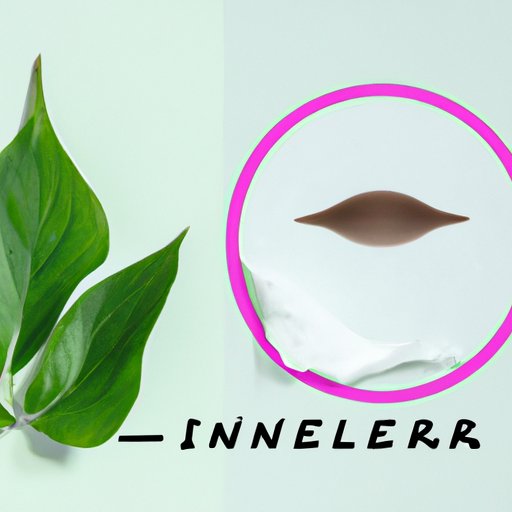
Introduction
Urinary incontinence, or the unintentional leakage of urine, can cause embarrassment and anxiety for those who experience it. It’s a common condition, affecting millions of men and women of all ages, and can occur for a variety of reasons. Some people experience urinary incontinence specifically when coughing, sneezing, or laughing. This is called stress incontinence, and it can be managed with a variety of techniques and treatments.
Whether you experience urinary incontinence on a daily basis or only occasionally, it’s important to address the issue to improve your quality of life. In this article, we’ll explore several ways to manage urinary incontinence when coughing, from behavioral modifications to medical treatments.
Behavioral Modifications
There are several simple modifications you can make to your daily activities to improve your urinary incontinence:
Drinking Water
Limiting your fluid intake before bed can help reduce the likelihood of incontinence during the night. Additionally, reducing your intake of bladder irritants like caffeine and alcohol can help decrease the frequency of incontinence episodes.
Toilet Habits
Instead of rushing to the bathroom at the first urge to urinate, try to hold off until your bladder is full. When you do go, try double voiding: going once, waiting a few minutes, and then trying again to fully empty your bladder. This can help reduce the amount of urine left in your bladder that may cause incontinence later on.
Exercise Patterns
High-impact exercises like running or jumping can exacerbate incontinence, so try modifying your exercise routine to include low-impact activities like walking or swimming. Additionally, maintaining a healthy weight can help alleviate pressure on the bladder and decrease the likelihood of incontinence episodes.
Pelvic Floor Exercises
The pelvic floor muscles play an important role in urinary continence, so strengthening them can help reduce incontinence episodes. Kegel exercises are a popular and effective way to strengthen the pelvic floor muscles:
Step-by-Step Guide to Performing Kegel Exercises:
- Identify the correct muscles by squeezing the same muscles used to stop urinating mid-stream.
- Tighten the muscles and hold for a count of 5.
- Relax the muscles for a count of 5.
- Repeat this cycle 10-20 times, 3 times per day.
Tips for Incorporating Kegel Exercises into Your Daily Routine:
- Try doing Kegels during daily activities like brushing your teeth or watching TV.
- Set reminders on your phone or computer to do Kegels at set times during the day.
- Make Kegels a part of your exercise routine.
Medications
There are several types of medications that can help manage urinary incontinence:
Anticholinergics:
These medications work by relaxing the bladder muscles, allowing the bladder to hold more urine before feeling the urge to urinate.
Beta-3 Agonists:
These medications work by increasing the bladder’s capacity to hold urine, reducing the frequency of incontinence episodes.
Topical Estrogen:
For women experiencing incontinence due to menopause-related vaginal atrophy, topical estrogen can help increase vaginal moisture and elasticity, reducing incontinence episodes.
It’s important to note that medications can have side effects and may not be appropriate for everyone. Talk to your healthcare provider about which medication, if any, is right for you.
Bladder Training
Bladder training is a technique that can help improve urinary incontinence by gradually increasing the amount of time between trips to the bathroom. This can help increase the bladder’s capacity and reduce the frequency of incontinence episodes. Here’s how to implement a bladder training program:
Step-by-Step Guide to Bladder Training:
- Track how often you go to the bathroom and when you experience incontinence episodes.
- Gradually increase the amount of time between bathroom breaks, starting with 10-15 minutes and increasing by 10-15 minutes each day.
- Use deep breathing or distraction techniques to help manage the urge to urinate.
- Track your progress and adjust the program as needed.
Surgery
In some cases, surgery may be an option for managing urinary incontinence. There are several types of surgery that can help, including:
Sling Procedures:
A sling is placed around the urethra to support it and reduce incontinence episodes.
Artificial Urinary Sphincter:
A small device is implanted that can be manually controlled to prevent urine leakage.
Bladder Neck Suspension:
The bladder neck is repositioned to reduce incontinence episodes.
Surgery should be considered carefully and only after trying other treatment options first. Talk to your healthcare provider about whether surgical intervention is right for you.
Medical Devices
There are several types of medical devices available for managing urinary incontinence:
Pessaries:
A small device inserted into the vagina that can support the bladder and reduce incontinence episodes.
Urethral Inserts:
A small insert placed into the urethra that can help block urine flow and reduce incontinence episodes.
External Collecting Devices:
Devices like adult diapers or pads that can absorb urine and prevent leakage.
Each type of device has its own pros and cons, so talk to your healthcare provider about which one might be right for you.
Conclusion
Urinary incontinence can be a frustrating and embarrassing condition, but there are several ways to manage it. From behavioral modifications to medical interventions, there are options available to help reduce incontinence episodes and improve quality of life. If you’re experiencing urinary incontinence, talk to your healthcare provider about developing an individualized treatment plan.




